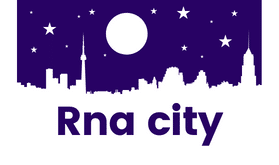Imagine a world where language learners can access personalized, dynamic, and engaging content at their fingertips, at any given time, without the need for physical classrooms or language centers. This possibility is rapidly becoming a reality thanks to advancements in the world of edtech. AI-driven language learning apps are transforming the way language learners expand their vocabulary, enhance their language proficiency, and engage with their learning material. By leveraging the power of AI algorithms, these apps provide personalized content and real-time feedback, thereby enabling advanced learners to reach their language learning goals more efficiently.
The Role of AI in Personalized Language Learning
AI is revolutionizing the way language learners interact with their learning content and tools. In the realm of language learning apps, AI is used to personalize the learning experience and tailor it to the unique needs of each user. It does this by analyzing user data and behavior, identifying patterns, and using these insights to deliver content that matches the learner’s proficiency level, learning style, and pace.
Also read : How Can Smart Homes Adapt to Reduce the Risk of Falls for the Elderly?
For advanced learners, this personalized approach is crucial. It allows them to work on specific areas of improvement, whether it’s expanding their vocabulary, mastering complex grammar structures, or practicing pronunciation. AI-powered apps, such as Duolingo, Rosetta Stone, and Babbel, use algorithms to constantly adapt and update the learning material based on the learner’s progress and performance.
For instance, if an advanced learner is struggling with certain vocabulary words, the app will provide targeted exercises and resources to help them master these words. This real-time feedback and personalized content not only lead to improved learning outcomes but also make the learning process more engaging and enjoyable for learners.
Additional reading : How Is Technology Enhancing the Detection of Counterfeit Pharmaceuticals?
Leveraging AI for Vocabulary Building
One of the main challenges that advanced language learners face is building and expanding their vocabulary. Traditional language learning methods often fall short in this regard, as they rely on static vocabulary lists and flashcards that may not necessarily cater to the learner’s needs or interests.
AI-driven language learning apps, however, are changing the game. They leverage AI algorithms to provide dynamic, context-based vocabulary learning experiences. These apps analyze the learner’s vocabulary knowledge and usage, identify gaps, and provide personalized vocabulary exercises to fill these gaps.
For example, if a learner frequently uses certain words or phrases, the app will suggest similar or related words to expand their vocabulary. Alternatively, if the app detects that the learner is avoiding certain words or struggling with them, it will provide targeted practice exercises and explanations to help the learner master these words. By providing such personalized vocabulary building experiences, AI-driven apps enable advanced learners to enrich their language skills in an efficient and effective manner.
Real-Time Feedback and AI
Feedback is a vital part of the language learning process. Without timely and accurate feedback, learners may continue to make the same mistakes without realizing it, thereby hindering their progress. Traditionally, this feedback was provided by language instructors who would correct learners’ mistakes in real-time.
However, with AI-driven language learning apps, this feedback is now automated and immediate. These apps use natural language processing (NLP) algorithms to analyze learners’ language use in real-time, identify errors, and provide corrective feedback instantly. This immediate feedback helps learners to identify their mistakes, correct them, and learn from them, thereby promoting self-correction and independent learning.
Moreover, the use of AI also allows for more detailed and comprehensive feedback. For advanced learners, this means getting specific feedback on nuanced aspects of language use, such as word choice, sentence structure, and even cultural appropriateness. This level of detailed feedback is often lacking in traditional language learning methods, making AI-driven apps a valuable tool for advanced learners.
The Future of AI-Driven Language Learning
As AI continues to evolve, so too does its potential in the field of language learning. Innovations in machine learning, NLP, and data analytics are paving the way for more advanced, sophisticated, and personalized language learning experiences.
One promising development is the use of AI to create immersive, interactive language learning environments. These ‘virtual classrooms’ can simulate real-life situations and conversations, providing learners with opportunities to practice their language skills in a safe and controlled setting. For advanced learners, this means being able to practice complex language tasks, such as negotiating in a foreign language or giving a presentation.
Moreover, the use of AI to analyze large volumes of user data can lead to more accurate and predictive personalization. This could involve predicting what vocabulary words a learner is likely to struggle with based on their past performance, or recommending specific learning resources based on the learner’s interests and preferences.
While we are still in the early stages of these developments, the potential of AI in language learning is undeniable. As technology continues to advance, we can expect to see even more innovative and effective ways to use AI to facilitate language learning. The future of language learning, it seems, is increasingly digital, personalized, and AI-powered.
From Static to Dynamic: Adaptive Learning Paths in Language Acquisition
In traditional language learning settings, learners follow a linear path, progressing from one unit to the next in a structured, pre-defined sequence. However, this approach often fails to consider the individual learner’s needs, preferences, and progress, resulting in a one-size-fits-all learning experience.
In contrast, AI-driven language learning apps are pushing the boundaries by providing adaptive learning paths. These paths are dynamic, flexible, and personalized, adjusting in real-time to the learner’s proficiency level, learning pace, and evolving needs. With Artificial Intelligence in play, the apps are equipped to analyze the learner’s performance data, track their progress, and adapt the learning content accordingly.
For advanced learners, this adaptability is a game-changer. It allows them to focus on areas where they need improvement, while also capitalizing on their strengths. If a learner has already achieved proficiency in certain grammar structures, for example, the app will not waste their time with unnecessary repetition. Instead, it will direct their attention and energy towards more challenging content, such as complex sentence constructions, or vocabulary that is relevant to their personal or professional interests.
AI-powered language learning apps like Duolingo, Babbel and Rosetta Stone are prime examples of this. They use advanced algorithms and machine learning to curate a learning path that aligns with the learner’s goals, interests, and proficiency level. The outcome is a truly personalized and efficient language learning experience, where every minute spent on the app contributes to meaningful, measurable progress.
Conclusion: The Dawn of a New Era in Language Learning
In the span of a few years, AI has transformed the landscape of language learning. By bringing personalization, adaptability, and real-time feedback to the forefront, AI-driven language learning apps have revolutionized language acquisition. They have made it possible for advanced learners to access high-quality, personalized learning experiences, irrespective of where they are or what time it is.
The integration of advanced technologies like machine learning, natural language processing, and data analytics has further enhanced the capabilities of these apps, enabling them to provide dynamic content, adaptive learning paths, and immediate, detailed feedback. The result is not just improved language skills, but also a more engaging, enjoyable, and satisfying learning experience.
As we move forward, AI will continue to reshape language learning in ways we are yet to imagine. The emergence of virtual reality and augmented reality technologies, for instance, presents exciting opportunities for creating immersive, real-world language learning experiences. The increasing sophistication of AI algorithms and machine learning models also holds promise for even deeper personalization and predictive learning capabilities.
The dawn of a new era in language learning is here, and it’s powered by artificial intelligence. For advanced learners, this means unprecedented access to customized learning content, real-time feedback, dynamic learning paths, and a host of other benefits that traditional language learning methods simply can’t match. The future of language learning is undoubtedly digital, personalized, and AI-powered, and it’s a future that holds immense potential and promise.











